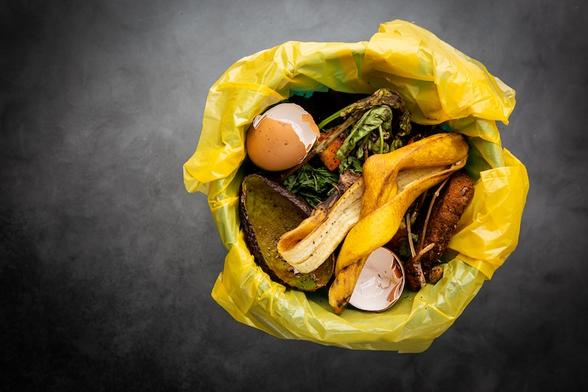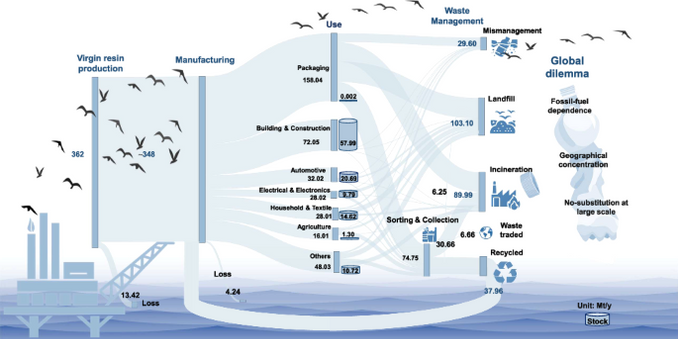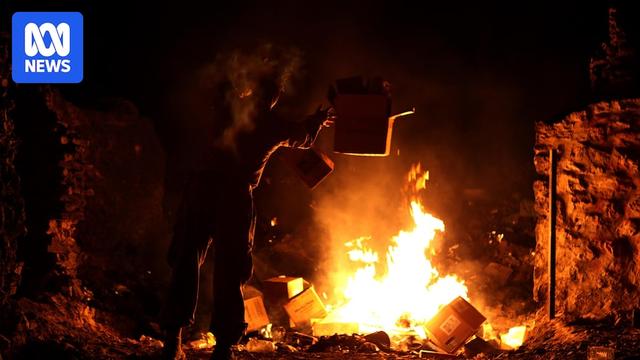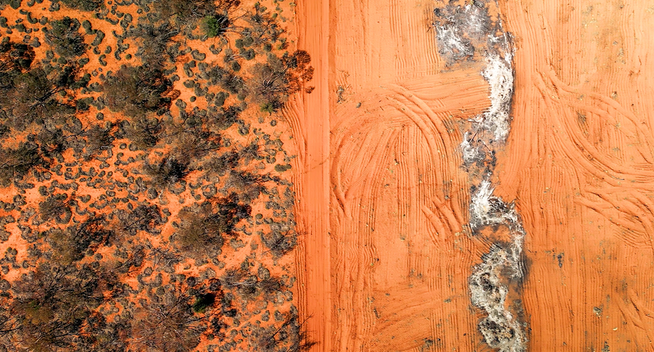Finland still burning biowaste despite recycling push https://www.byteseu.com/934580/ #biowaste #campaign #composting #Energy #fertiliser #Finland #incineration #Kivo #Recycling #WasteManagement

Finland still burning biowaste despite recycling push https://www.byteseu.com/934580/ #biowaste #campaign #composting #Energy #fertiliser #Finland #incineration #Kivo #Recycling #WasteManagement

1/n New analysis concludes: „Furthermore, there is a significant shift in waste disposal: #incineration is emerging as a prominent waste disposal method (34%), landfill is decreasing substantially (40%), while the global #recycling rate remained stagnant (9%). #plastic
https://www.nature.com/articles/s43247-025-02169-5

Airborne Hazards
Smoke pollution from pile burning, bushfires and burn pits
Push for Australia to recognise toxic burn pits in Afghanistan as cause of cancer in soldiers >>
https://www.abc.net.au/news/2025-03-11/burn-pits-afghanistan-iraq-causing-adf-soldiers-cancer/105004910
Airborne Hazards and Burn Pit Exposures (US)
"Open air pits used to burn several waste products, including, but not limited to: chemicals, paint, medical and human waste, metal/aluminum cans, munitions, petroleum and lubricant products, plastics and Styrofoam, rubber, wood, and food waste."
List of illnesses from airborne hazards and burn pit exposures >>
https://www.publichealth.va.gov/exposures/burnpits/
Pile burning in rural NSW
"Burning of cut and stacked vegetation is referred to as a pile burn." The piles often also contain waste materials. >>
https://www.rfs.nsw.gov.au/__data/assets/pdf_file/0012/13323/Standards-for-Pile-Burning-V2.pdf
Black Summer bushfire smoke
"Before summer's end, 33 people had lost their lives, more than 3,000 homes had been destroyed, and more than 17 million hectares of land had been burnt, devastating lives and regional economies. Many cities and towns were blanketed in smoke with air quality ranking amongst the worst in the world.">>
https://www.apsc.gov.au/state-service/state-service-report-2019-20/chapter-1-commitment-service/black-summer

Quintessentially Australian:
"Bulldozers made quick work of the Murray Darling Basin landscape."
"Bulldozers flattened trees and grasses which were then burned"
>>
https://au.news.yahoo.com/satellite-photos-reveal-disturbing-change-to-iconic-aussie-landscape-065657701.html
#biodiversity #EPBCAct #nature #conservation #LandClearing #MurrayDarlingBasin #agribusinesses #PropertyDevelopers #governance #destruction #NSW #Australia #climate #incineration

Tacoma News Tribune: Man dies in fiery crash in South Hill area after Tesla reaches speeds of 100-plus mph (2/18/25)
"A 45-year-old man was killed in a fiery, high-speed crash into trees and a fence in the South Hill area Monday, authorities said. The man was driving alone in a Tesla eastbound on 128th Street East in excess of 100 mph shortly before 11 p.m....(a) deputy broke the driver-side window in an effort to rescue the victim, who was described as “very large,” but could not pull him out before flames engulfed the vehicle,"
https://www.thenewstribune.com/news/local/article300548654.html#storylink=cpy
#Incineration of textiles ‘could cost UK economy £200m’ - letsrecycle.com https://buff.ly/4gtc7Qr
#TextilesEPR #TextileRecycling #ExtendedProducerResponsibility #EPR #CircularEconomy #EFW #EnergyFromWaste
Yes a deposit on plastic would be a help, but it isn't enough now. There needs to be tighter regulation of the composition of plastics used (to enhance some recycleability), limit use to essential purposes.
Some see incineration of plastics (to generate electricity/heat) as a path forward for disposal, but incineration releases toxic VOC chemicals and also leaves toxic ash with microplastics to be carefully disposed of. (Park et al, Sep 2022 - Analysis of volatile organic compounds produced during incineration of non-degradable and biodegradable plastics (Sep 2022)
A recent study on Incineration and Microplastics in Bottom Ash. 360 to 102,000 microplastic particles left in the bottom ash Per metric ton of plastic waste incinerated. “an abundance of 1.9–565 n/kg, which indicated that per metric ton waste produce 360 to 102,000 microplastic particles after incineration. Nine types of plastics were identified, of which polypropylene and polystyrene were the predominant types. Microplastics sized between 50 μm and 1 mm accounted for 74%. Granules, fragments, film, and fibers accounted for 43%, 34%, 18%, and 5% of the microplastics, respectively…. Our observations provide empirical evidence proving that incineration is not the terminator of plastic waste, and bottom ash is a potential source of microplastics released into the environment. (Yang et al Jan 2021)
#waste #Plastics #Incineration #PlasticsIncineration #Microplastics #PlasticsCrisis
https://www.sciencedirect.com/science/article/abs/pii/S0304389420314187